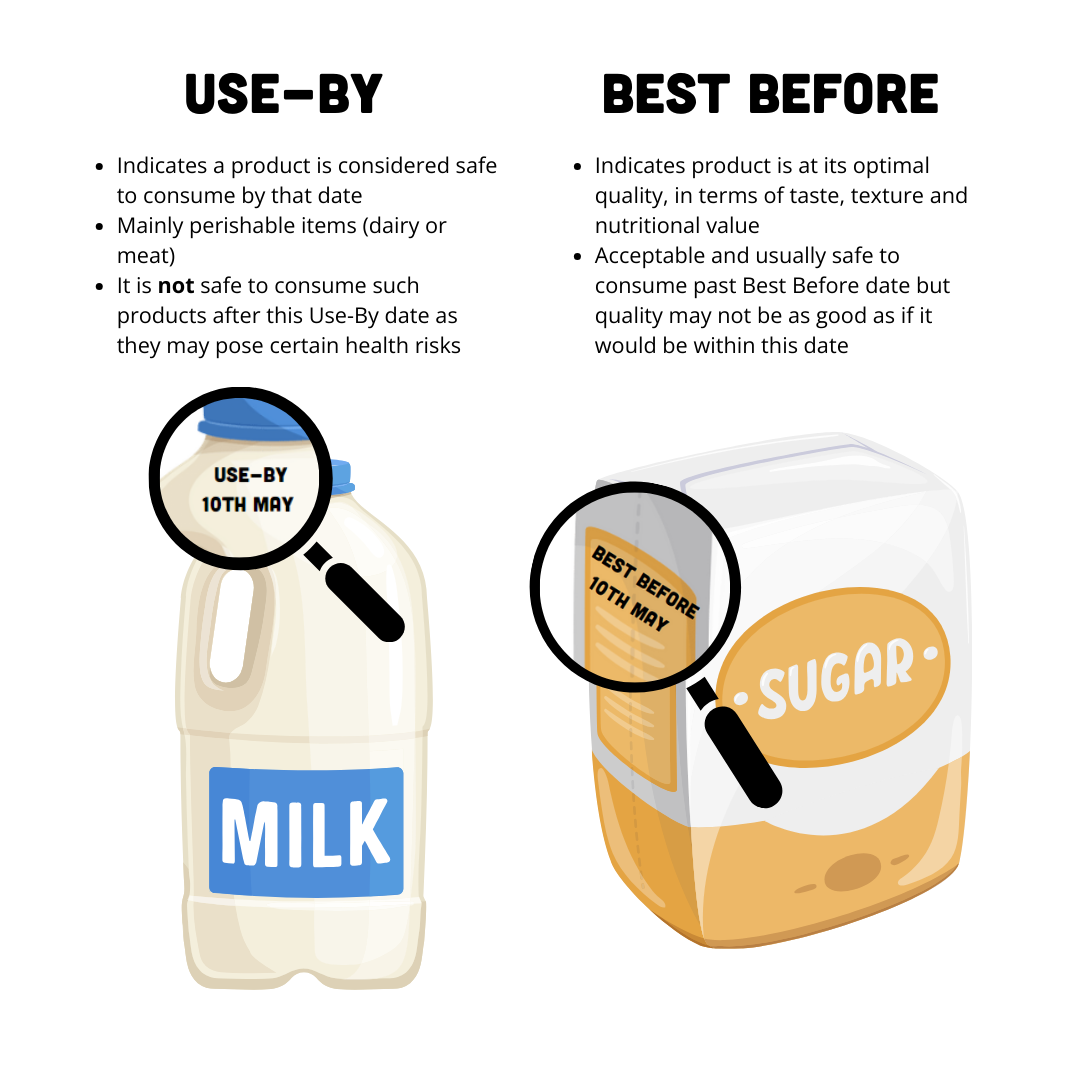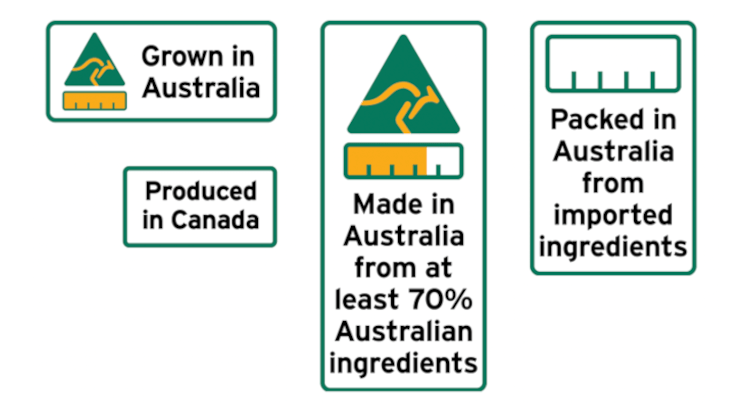Cracking the Code- Part 3: A Simple Guide to Understanding Food Labels

In the final blog of our three-part series on understanding food labels, we focus on the other often overlooked yet important aspect of food labelling; use-by dates and storage directions among other things. To recap in the last two post, we’ve uncovered the intricacies of ingredient lists and the Nutrition Information Panel, equipping you with essential tools to make healthier food choices.
Now, we shift our attention to the significance of use-by dates for food safety and best practices for storing groceries to maximize freshness and shelf life. We will also look to understand what country of origin on food labelling means. Understanding these elements is crucial for ensuring the safety, quality, and sustainability of the foods you buy. Let’s wrap up this journey toward becoming a more informed and confident consumer!
Use-By Date & Storage Directions
There are two types of dates on food labels: Use-By Dates and Best Before Dates.

Figure 1: Use-By Date vs Best Before Date Comparison
TIP: Avoid discarding foods just because they have passed their best before date. They are generally still safe to eat, though they might not be at peak quality.
Storage instructions are normally located near the use-by/best before dates on food labels. The most common directions include “keep refrigerated” or “store in a cool, dark place”. These instructions are required by manufacturers, to ensure the food is kept safe and fresh for consumption. Instructions may also include preparation and cooking directions as some products require specific heating and serving methods. Following these guidelines is crucial to kill any potentially harmful bacteria that may still be present in the food.
Labelling opened food and use of containers play a crucial role in food storage by maintaining freshness, preventing cross-contamination, and extending shelf life. When storing food, it’s essential to prioritize safety by placing raw foods on the bottom shelf to prevent drips or leaks from contaminating ready-to-eat items below. This simple practice helps maintain hygiene standards and reduces the risk of foodborne illnesses, ensuring that stored foods remain safe and enjoyable for consumption.
Country of Origin
The country-of-origin diagrams are also now a requirement for packaged food labels. These have three categories as displayed in the image below:
Grown In: Where the ingredients used to make the product have been grown within that place or country.
Made In: Where a product has been made and packaged.
Produced In: Where a product is produced in with ingredients from that country.

Figure 2: Country of Origin Diagrams
As shown on the Country-of-Origin label, Yakult is proudly made in Australia using at least 99% Australian ingredients. The remaining 1% is the bacteria strain, which is sourced from Japan. The production takes place in Yakult’s Australian facility in Dandenong, Victoria, using locally sourced ingredients to support Australian farmers.

Figure 3: Country of Origin on Yakult packaging
Food labels might feature a Health Star Rating (HSR), which can serve as an additional tool for comparing products. To learn more about the Health Star Rating, visit our blog here. With this knowledge, you can confidently navigate the supermarket aisles, equipped to make decisions to support a balanced and healthy diet for you and your family.
Thank you for tuning in to our three-part blog series on Understanding Food Labels. In this final installment, we delved into the significance of country of origin labels, use-by dates, and proper storage directions. We hope this series has provided you with valuable insights to make informed decisions while shopping and ensure food safety at home. Stay informed, stay healthy!
Written by Jemma Kilmartin (Nutritionist)
